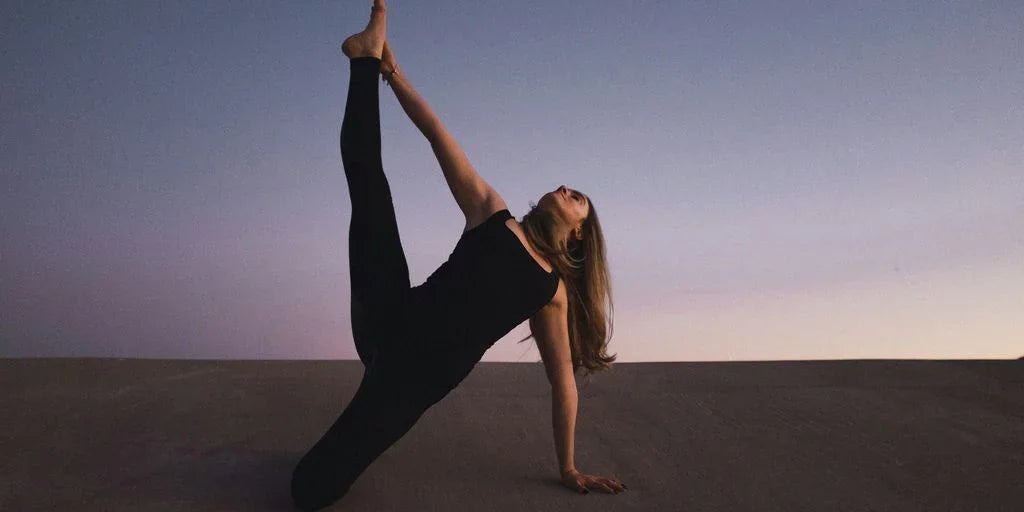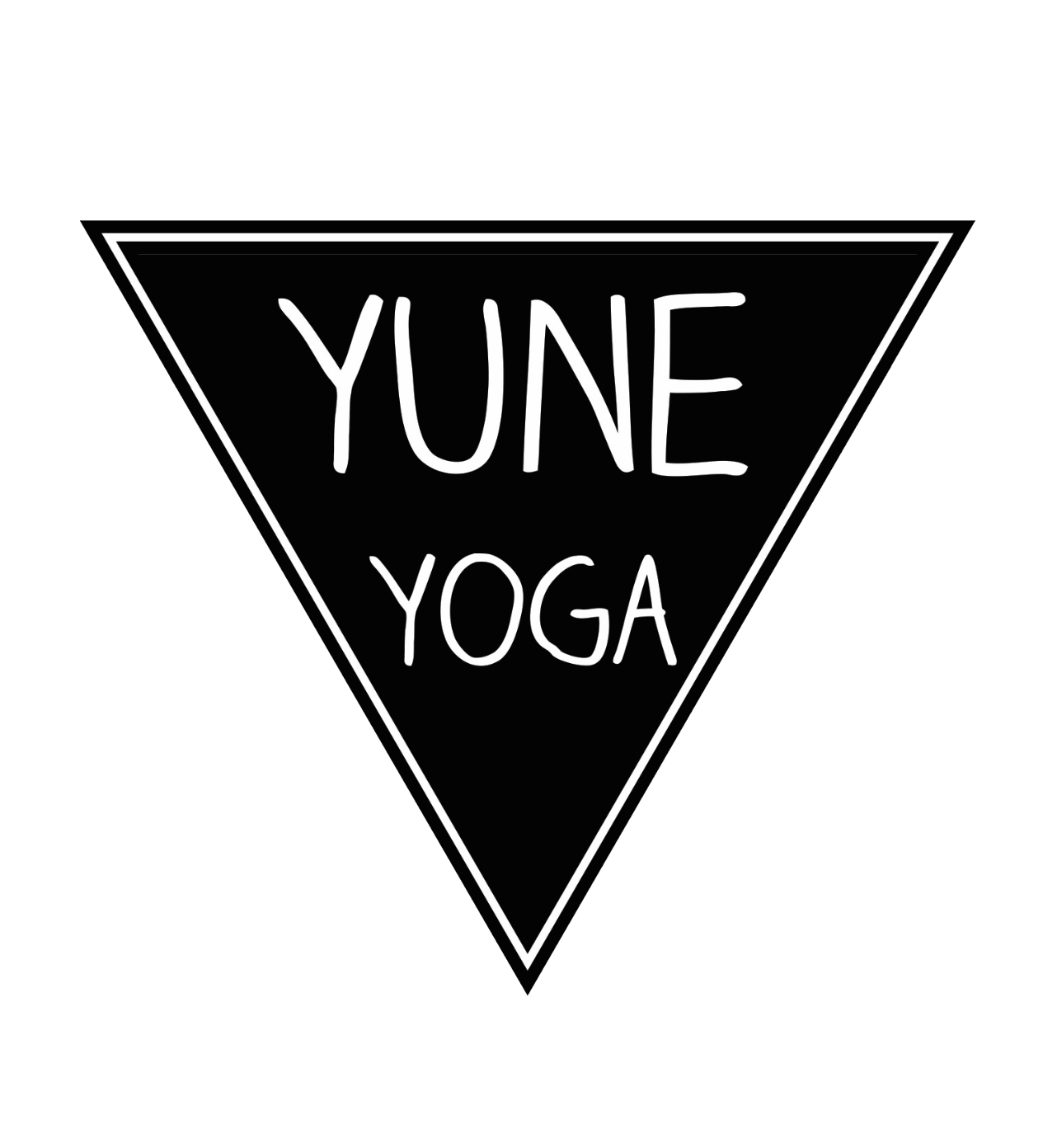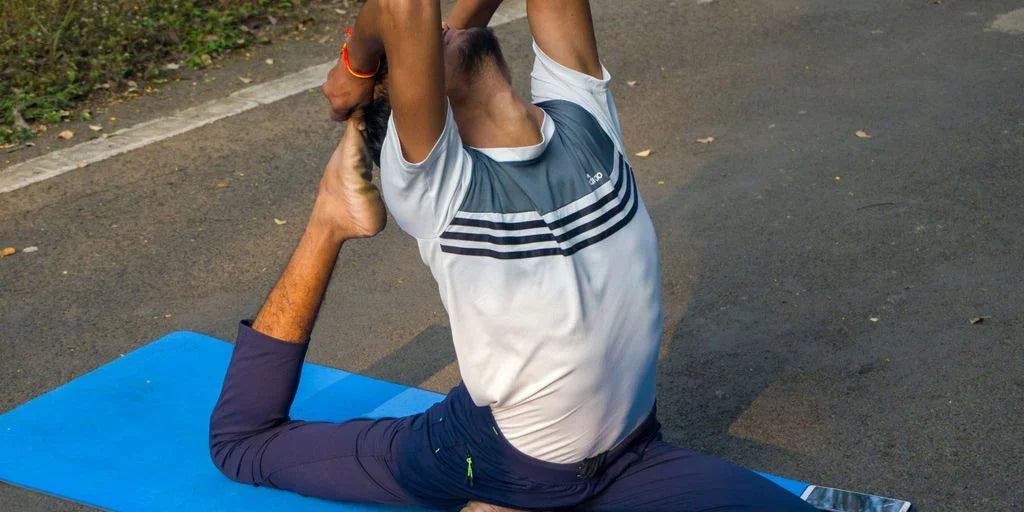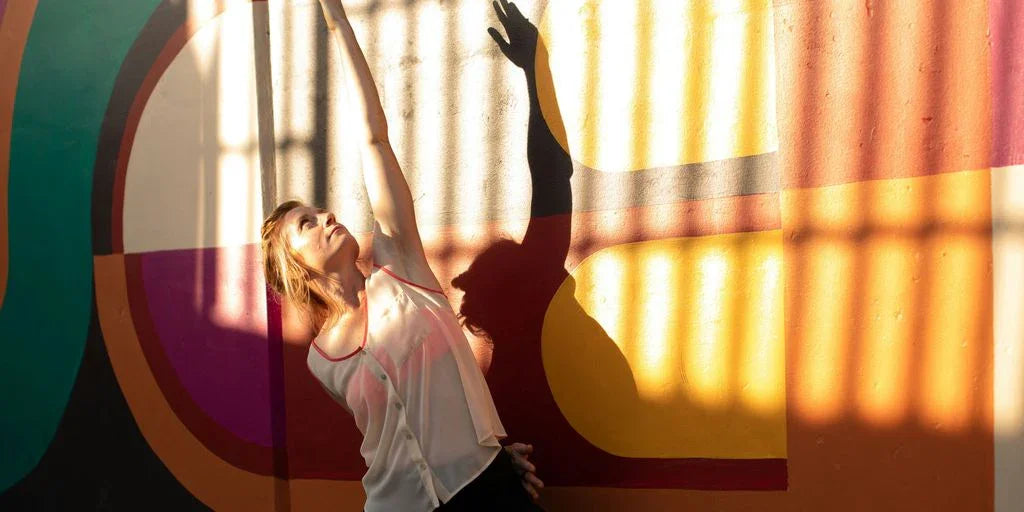
Mastering the Fundamentals: Essential Beginning Yoga Postures for New Practitioners
Starting something new, especially something like yoga, can feel a little bit much. But don't worry, it's not as hard as it might seem. This article is all about helping you get started with some basic yoga postures. These poses are like building blocks; they'll help you get stronger and more flexible. Plus, they're a good way to get used to how yoga works. Think of this as your friendly guide to beginning yoga postures, making sure you feel good and confident as you learn.
Key Takeaways
- Begin with simple poses to build strength and flexibility.
- Pay attention to your breath and how your body feels during practice.
- Use things like blocks or straps to help you get into poses more easily.
- Mix up different poses in your routine for a balanced practice.
- Always listen to your body and change poses if you need to.
Understanding The Importance Of Basic Yoga Poses
Basic yoga poses are way more than just simple stretches; they're the foundation for everything else you'll do in yoga. They set you up for the harder stuff and give you tons of benefits for your body and mind. It's easy to want to jump into crazy poses right away, but honestly, getting good at the basics is where it's at. Let's talk about why these poses are so important.
Building Strength And Flexibility
Basic yoga poses are awesome for building both strength and flexibility. They work a bunch of different muscles at the same time, which helps you build a solid base of strength. For example, poses like Warrior I and II work your legs, core, and arms, which makes you stronger overall. At the same time, these poses gently stretch your muscles, which makes you more flexible and gives you a better range of motion. This mix of strength and flexibility is essential for overall fitness and helps keep you from getting hurt.
Cultivating Body Awareness
Yoga is all about getting in touch with your body and understanding what it can do. Basic poses are really good at helping you become more aware of your body. As you move through each pose, you start to notice how your body feels, where you're tense, or if anything feels uncomfortable. This awareness helps you make changes to the pose so you're doing it safely and getting the most out of it. Over time, this awareness turns into better posture, balance, and coordination in your everyday life.
Promoting Mental Calm
Besides the physical stuff, basic yoga poses also help you relax and be more mindful. When you focus on your breath and how your body is moving, it can quiet your mind and lower your stress levels. Poses like Child’s Pose are made to help you relax, let go of tension, and find some peace. Doing these poses regularly can help you deal with stress, sleep better, and feel more at peace.
Taking the time to learn and practice basic yoga poses is an investment in your overall well-being. It's about building a strong foundation, understanding your body, and finding a sense of calm in your daily life. Don't rush the process; enjoy the journey of discovering what your body can do and how yoga can improve your life.
Essential Standing Poses For Beginners
Standing poses are often the first thing people learn, and honestly, they're super important. They're all about building a solid base of strength and getting comfortable with how your body moves and balances. I remember when I started, just standing in some of these poses felt like a workout!
Mountain Pose Foundation
Mountain Pose (Tadasana) might seem like just standing, but it's actually the foundation for all other standing poses. It teaches you how to ground your feet, engage your muscles, and align your spine. Think of it as your reset button. If you're feeling wobbly in other poses, come back to Mountain Pose to find your center.
- Feet hip-width apart, weight evenly distributed.
- Engage your thighs and core.
- Lift your chest and relax your shoulders.
It's easy to rush through Mountain Pose, but taking the time to really feel the alignment can make a huge difference in your practice. Pay attention to how your body feels from the ground up.
Warrior I Pose
Warrior I (Virabhadrasana I) is a powerful pose that builds strength in your legs, opens your hips, and stretches your chest. It can be a little tricky to get the alignment right, but it's worth the effort. I always feel so strong and grounded after doing this one. It's a great way to improve overall fitness.
- Start in Mountain Pose.
- Step one foot back about 3-4 feet.
- Turn your back foot out slightly and bend your front knee over your ankle.
- Raise your arms overhead and gaze forward.
Warrior II Pose
Warrior II (Virabhadrasana II) is another classic standing pose that strengthens your legs and opens your hips. It's also a great way to improve your balance and coordination. I find it really helps me focus and stay present. It's a great way to improve back strength.
- Start in Mountain Pose.
- Step one foot back about 3-4 feet.
- Turn your back foot out 90 degrees and bend your front knee over your ankle.
- Extend your arms out to the sides, parallel to the floor, and gaze over your front hand.
Key Seated Poses To Incorporate

Seated yoga poses are awesome because they give you a chance to ground yourself, really focus on your breath, and still get a good stretch. Plus, they're often easier than standing poses, especially if you're just starting out or have any balance issues. Let's check out some key seated poses you can add to your routine.
Easy Pose For Comfort
Easy Pose (Sukhasana) is a super chill, cross-legged position that's all about finding stillness and relaxation. It gently opens the hips and thighs, and it's a fantastic way to kick off or wrap up your yoga practice. If your hips are tight, sitting on a folded blanket can make a huge difference. When I first started, I could barely sit up straight in this pose, but with practice, it became much easier and more comfortable. It's a great way to improve back strength.
Seated Forward Bend
The Seated Forward Bend (Paschimottanasana) is a deeper stretch that targets the hamstrings and lower back. It can be intense, so it's important to listen to your body and not push it too hard. The goal isn't to touch your toes, but to lengthen your spine and release tension. I find it helpful to imagine myself folding from the hips, rather than rounding my back. It's a process, and some days you'll be more flexible than others. Don't sweat it.
Bound Angle Pose
Bound Angle Pose (Baddha Konasana), also known as Cobbler's Pose, is another hip opener that can be really beneficial for flexibility and releasing tension in the inner thighs and groin. It involves bringing the soles of your feet together and letting your knees fall open. You can gently flutter your knees like butterfly wings to deepen the stretch. It's a pose that can be modified in many ways, using blocks under your knees for support or sitting on a blanket to elevate your hips. It's all about finding what works best for your body.
Remember, yoga is a journey, not a destination. Be patient with yourself, listen to your body, and enjoy the process. These seated poses are a great starting point for building a strong and mindful practice.
Fundamental Balancing Poses To Master
Balancing poses can feel intimidating at first, but they're fantastic for developing both physical and mental focus. The secret is to engage your core and find a point to focus on. Don't worry if you wobble – it's all part of the learning curve! It's about finding that sweet spot of steadiness and ease, even when things get tough.
Tree Pose For Stability
Tree Pose is a classic for good reason. It's all about grounding yourself through one foot while finding your balance. Here's how I usually approach it:
- Start in Mountain Pose.
- Shift your weight to one foot and bring the sole of your other foot to your inner thigh or calf (avoid the knee!).
- Bring your hands to prayer at your chest or reach them overhead like branches.
It's okay if you wobble! Just come back to your center. Staring at a fixed point can help a lot.
Eagle Pose For Focus
Eagle Pose is a bit more challenging, involving wrapping your arms and legs. It's great for improving concentration and coordination. I find it really helps to release tension in my upper back. Here's a quick breakdown:
- Start in Mountain Pose.
- Bend your knees slightly and shift your weight to one leg.
- Wrap the other leg around the standing leg, hooking the foot behind the calf if possible.
- Wrap your arms, bringing your elbows in line with your shoulders and your palms facing each other (or back-to-back if that's easier).
Eagle Pose is a great way to challenge your balance and coordination. Don't worry if you can't wrap your limbs completely – just go as far as you can while maintaining good form.
Dancer's Pose Introduction
Dancer's Pose is where things start to get really interesting. It's a beautiful pose that combines balance, strength, and flexibility. It might seem daunting, but breaking it down makes it more approachable. It's a great way to build leg strength.
- Start in Mountain Pose.
- Bend one knee and reach back to grab your foot with the same-side hand.
- Extend your other arm forward for balance.
- Kick back into your hand while leaning forward, keeping your chest open.
| Muscle Group | Benefit |
|---|---|
| Quads | Strengthens and stretches |
| Hamstrings | Stretches |
| Core | Improves stability and balance |
| Shoulders | Opens and stretches |
Gentle Floor Poses For Relaxation
Floor poses are great because they let you really sink into the stretch, using gravity to your advantage. Plus, they're super relaxing and a nice way to wind down after a more active yoga session, or even just a long day. It's all about letting go of tension and finding some peace on your mat.
Child's Pose For Rest
Child's Pose is like a reset button for your body and mind. It gently stretches your hips, thighs, and ankles, while also calming your brain and relieving stress. It's my go-to when I need a break during a more intense practice. To get into it, start on your hands and knees, then bring your big toes together to touch. Widen your knees as wide as your hips, and then sink your hips back towards your heels. If your hips don't quite reach your heels, that's okay! Just go as far as is comfortable. Extend your arms out in front of you, palms down, and rest your forehead on the mat. If your forehead doesn't reach the mat, you can place a block or a folded blanket underneath it for support. Close your eyes and breathe deeply, letting go of any tension in your body. You can stay in child's pose for as long as you like, even several minutes.
Cat-Cow Flow For Spine Mobility
Cat-Cow is a gentle, flowing sequence that warms the body and brings flexibility to the spine. It's a great way to start your day or to ease any stiffness in your back.
Here's how to do it:
- Start on your hands and knees, with your wrists directly under your shoulders and your knees directly under your hips. Your fingers should be spread wide, and your toes can be tucked or untucked, whichever feels more comfortable.
- Inhale as you move into Cow Pose. Drop your belly towards the mat, lift your tailbone and chest towards the ceiling, and draw your shoulders back. Look up towards the ceiling, but be careful not to strain your neck.
- Exhale as you move into Cat Pose. Round your spine towards the ceiling, tuck your tailbone, and draw your pubic bone forward. Release your head towards the floor, but don't force your chin to your chest.
- Continue flowing between Cat and Cow, coordinating your breath with your movement. Do this for at least 5-10 breaths, or longer if you like. Focus on moving slowly and mindfully, paying attention to the sensations in your body. This flow can really improve your spine mobility.
I find that focusing on my breath really helps me get the most out of Cat-Cow. Inhaling deeply as I move into Cow Pose helps me open up my chest and stretch my spine, while exhaling fully as I move into Cat Pose helps me release any tension in my back.
Corpse Pose For Deep Relaxation
Corpse Pose, or Savasana, might seem like the easiest pose, but it's actually one of the most important. It's a time for complete relaxation and integration of your practice. It allows your body to absorb all the benefits of the poses you've done, and it's a great way to calm your mind and reduce stress.
To do it:
- Lie flat on your back with your legs extended and your arms at your sides, palms facing up.
- Allow your feet to fall open to the sides, and close your eyes.
- Make any small adjustments you need to feel comfortable. You can place a blanket under your head or a bolster under your knees for support.
Stay in Savasana for at least 5-10 minutes, or longer if you have time. Focus on your breath, and let go of any thoughts or worries. Just allow yourself to be present in the moment and to fully relax. It's a great way to achieve deep relaxation.
Integrating Breath With Movement
It's easy to forget about your breath when you're trying to nail a new pose or just get through a tough sequence. But connecting your breath to your movement is a game-changer. It's what turns yoga from just stretching into a moving meditation. When you sync your breath with each pose, you're not only deepening the stretch but also calming your mind and boosting your energy.
Basic Pranayama Techniques
Pranayama, or breath control, is a core part of yoga. It's not just about breathing deeply; it's about using specific techniques to influence your energy and mental state. Here are a few to get you started:
- Ujjayi Breath (Victorious Breath): This involves slightly constricting the back of your throat as you inhale and exhale through your nose. It creates a soft, ocean-like sound and helps to focus your mind. It's like giving your breath a gentle hug.
- Nadi Shodhana (Alternate Nostril Breathing): This technique involves closing one nostril at a time while breathing. It's said to balance the energy channels in your body and calm the nervous system. It's surprisingly relaxing.
- Kapalabhati (Skull Shining Breath): This is a more active breathing technique that involves forceful exhales and passive inhales. It's energizing and helps to clear your mind. It's like a shot of espresso for your breath.
Synchronizing Breath And Asana
Once you're familiar with some basic pranayama techniques, you can start to sync them with your yoga poses. The general rule is to inhale as you expand or lengthen, and exhale as you contract or fold. For example:
- Inhale as you reach your arms overhead in Mountain Pose foundation.
- Exhale as you fold forward in a Seated Forward Bend.
- Inhale as you lift your chest in a gentle backbend.
Paying attention to your breath helps you stay present in the moment and avoid pushing yourself too hard. It's a reminder to listen to your body and honor its limits. It's not about forcing anything; it's about finding a rhythm that works for you.
Mindful Breathing Practices
Beyond specific techniques, simply paying attention to your breath throughout your practice can make a big difference. Notice the quality of your breath – is it shallow or deep, fast or slow? Can you feel the air moving in and out of your body? If you find your mind wandering, gently bring your attention back to your breath. This simple act of mindfulness can help you stay grounded and centered, both on and off the mat. It's like giving your mind a little vacation.
Building A Consistent Home Practice
It's one thing to attend a yoga class now and then, but building a consistent home practice? That's where the real magic happens. It's about carving out time for yourself, creating a space where you can unwind, and making yoga a regular part of your life. It doesn't have to be perfect, or even long, to be effective. Let's look at how to make it work.
Creating A Dedicated Space
Think about where in your home you feel most at peace. It doesn't need to be a huge room; even a small corner can work. The key is to make it your space. Maybe add a plant, a candle, or a yoga mat that inspires you. The goal is to create an area that signals to your brain that it's time to relax and focus. Keep it tidy and free from distractions as much as possible. This helps set the tone for a mindful practice.
Establishing A Routine
Consistency is key when it comes to building a habit. Start small. Don't aim for an hour-long session every day if you know you won't stick to it. Instead, try 15-20 minutes a few times a week. Schedule it in your calendar like any other important appointment. Here's a sample weekly schedule:
| Day | Time | Duration | Focus |
|---|---|---|---|
| Monday | 7:00 AM | 20 mins | Gentle Stretch |
| Wednesday | 6:00 PM | 25 mins | Strength Poses |
| Friday | 7:00 AM | 15 mins | Relaxation |
Listening To Your Body's Needs
Yoga is not about pushing yourself to the limit. It's about connecting with your body and honoring what it needs. Some days you might feel energized and ready for a challenging flow. Other days, you might need a more gentle, restorative practice. Pay attention to your body's signals. If something doesn't feel right, modify the pose or skip it altogether. It's okay to rest. It's okay to take breaks. It's okay to do what feels good for you.
Remember, your home yoga practice is a personal journey. There's no right or wrong way to do it. The most important thing is to show up for yourself, be present in the moment, and enjoy the process. Over time, you'll find that your practice becomes a source of strength, peace, and well-being in your life.
Wrapping Things Up
So, there you have it! These basic yoga poses are a great way to start your practice. Remember, everyone begins somewhere, and it's totally fine to take your time. Don't rush into harder poses just because they look cool on social media. Focus on getting these basics down first. They'll help you get stronger, more flexible, and feel more sure of yourself. Plus, yoga is all about listening to your body, so pay attention to how you feel in each pose. Keep practicing, and pretty soon, you'll be ready to try more challenging poses. Enjoy your yoga journey!
Frequently Asked Questions
What good things come from doing basic yoga poses?
Starting with basic yoga poses helps you get stronger and more flexible. It also makes you more aware of your body and helps you feel calm.
How long should I hold each yoga pose?
When you're new to yoga, try to hold each pose for about 30 seconds to 1 minute. Do what feels comfortable for your body.
Do I need special stuff to begin yoga?
You don't need much to start. A yoga mat is helpful. Things like blocks or straps can make poses easier to do.
Can I do yoga at my house?
Yes! You can easily do yoga at home. There are lots of online videos and guides to help you.
Is yoga good for everyone?
Yoga is good for almost everyone. But if you have any health problems, it's a good idea to talk to your doctor before you start.
How often should I practice yoga?
It's a good idea to do yoga a few times a week, like 2-3 times. Even short practices regularly are better than long ones once in a while.


